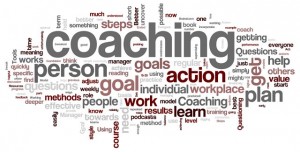 Many leaders think they are coaching when they are really just having a nice chat. True coaching occurs when the leader challenges a person to identify and take action to reach a specific goal. Great leaders look for the coachable moments — those moments when learning can occur and motivation can be instilled. It’s where the opportunity exists to help a person think deeper, explore options, and create a plan of action.
Many leaders think they are coaching when they are really just having a nice chat. True coaching occurs when the leader challenges a person to identify and take action to reach a specific goal. Great leaders look for the coachable moments — those moments when learning can occur and motivation can be instilled. It’s where the opportunity exists to help a person think deeper, explore options, and create a plan of action.
You will be a better leader if you use a proven coaching model to guide your conversations and interaction with the people you lead. The model I use is called “GOAL.” This model is easy to remember, provides a structured process for progression, and gives you a consistent approach you can use over and over again. Below you will find the 4 components that make up this coaching framework.
The GOAL Model:
Goal – The first step in the coaching process is to ensure the employee has a goal. Many people find it difficult to define or focus on one specific goal. As a coach, you want to help the employee clarify and define the outcome that is wanted or needed.
The goal can take many forms. It could be hitting a certain sales number, finishing a project, or improving a relationship with a colleague. The goal may be created by the person or may be given by the supervisor. The point of this step is to make sure the focus is set for a productive coaching conversation to occur. Here are some questions that you can use to guide the person you are coaching toward goal clarity.
- What do you want to focus on?
- What outcome do you want?
- What’s your goal?
- What one thing must change?
Options/Opportunities – Once the goal is determined, the coach needs to help the employee discover the options or opportunities available to him/her that will lead toward the goal. It is important that you challenge the employee to think deeply and use imagination to determine all the possible options. Allow the person being coached to come up with ideas before you provide your ideas. They will be much more likely to “buy-in” to their own options.
- What are the possible ways you can reach your goal?
- What creative action can you take to reach your goal?
- What options/opportunities will move you towards your goal?
- What have you done before, in a similar situation, that was successful?
Action Plan – Now that the options/opportunities have been discussed it is now time to create an action plan for how the person will reach their goal and achieve the outcome he/she is seeking. As a coach, you want to challenge the employee to determine and plan their path forward. This will include deciding on and writing down their actions steps, resources, and timeline. Here are a few questions you may want to use.
- What are the most viable options/opportunities?
- What needs to be the first step?
- What resources will you need?
- What is your timeline?
Leading Action – Now that the person being coached has an action plan, you can motivate the employee by leading them towards action and success. To do this you want to verbalize your support and partner with the employee to create a plan for follow-up and accountability.
- What will you have accomplished by this time next week?
- How will you measure your success?
- How can I hold you accountable?
- When would you like for me to follow-up with you?
Using each step of this model will ensure you continue to progress in the coaching conversation and move the person toward a plan and action. As with any framework or model, allow it to be a guide but not a cage.
